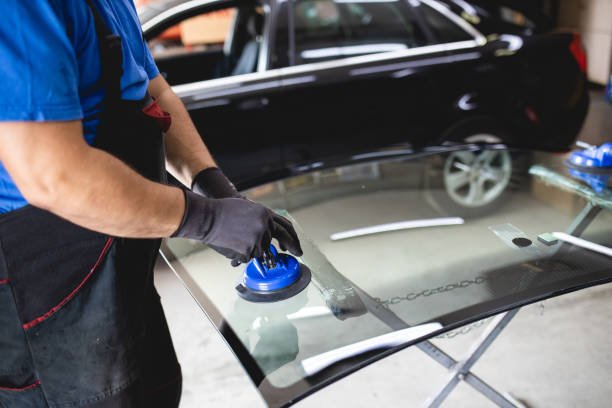The Environmental Impact of Auto Glass Repair and Replacement
The automotive industry has long been scrutinized for its environmental footprint, encompassing everything from exhaust emissions to the disposal of vehicle parts. One often overlooked aspect is auto glass, comprising windshields, windows, and sunroofs. As our awareness of environmental concerns grows, it becomes increasingly important to understand the impact of auto glass repair and replacement. This blog delves into the environmental implications of these practices, offering insights into how they contribute to sustainability efforts and what can be done to minimize negative effects.
Auto glass is typically made from laminated or tempered glass. Laminated glass, used primarily for windshields, consists of two glass layers bonded by a plastic interlayer, which helps prevent the glass from shattering upon impact. Tempered glass, used for side and rear windows, is treated by heat or chemicals to increase its strength and cause it to shatter into small, rounded pieces instead of sharp shards upon breakage. Both types are pivotal for understanding auto glass safety standards but present unique challenges and opportunities in terms of environmental impact.
Get In Touch
Production and Initial Environmental Footprint
The production of auto glass involves significant energy consumption, primarily due to the high temperatures required to melt and mold the glass. This process generates considerable CO2 emissions, contributing to global warming. Additionally, the mining of silica sand—a primary material in glass production, can lead to land degradation and biodiversity loss if not managed responsibly. The environmental impact here is primarily dictated by the manufacturing techniques and the source of the energy used. Manufacturers that employ energy-efficient technologies and renewable energy sources can significantly reduce the carbon footprint of auto glass production.
Repair vs. Replacement: Environmental Considerations
When it comes to damaged auto glass, the two main solutions are repair and replacement. Each has distinct environmental implications:
Auto Glass Repair
Repairing auto glass, particularly windshields, is often possible when the damage is not severe. This process usually involves injecting a resin into the chip or crack, which is then cured and polished to restore the integrity and clarity of the glass. The environmental advantage of repairing over replacing is substantial, as it prolongs the life of the glass and avoids the energy consumption and emissions associated with producing a new piece. Moreover, it reduces waste, preventing the old glass from ending up in landfills where it does not decompose.
Auto Glass Replacement
Replacement is necessary when damage is too extensive to repair. This process has a higher environmental impact due to the production of new glass and the disposal of old glass. While glass is recyclable, the specific composition of auto glass (especially laminated glass) makes it difficult to recycle through standard municipal recycling systems. Specialized facilities are required to separate the glass from its plastic layer, a service not widely available, leading to much of the auto glass being discarded in landfills.

Sustainable Practices in Auto Glass Services
The key to reducing the environmental impact of auto glass repair and replacement lies in sustainable practices:
Recycling and Reuse: Encouraging the development of more recycling facilities capable of handling laminated auto glass can mitigate the environmental impact. Additionally, reusing tempered glass where safe and feasible can further reduce the demand for new materials.
Choosing Repairs Over Replacement: When safety is not compromised, opting for repairs over replacements can significantly decrease the environmental footprint associated with auto glass. This not only conserves resources but also reduces waste. For tips on maintaining auto glass, it’s important to consider
simple DIY techniques that can further prolong the life of your vehicle’s glass.
Technological Innovations: Advances in glass manufacturing and recycling technologies can lessen the environmental impact. For example, using recycled glass cullet in the production process can reduce the amount of raw materials needed and lower energy consumption.
Awareness and Education: Vehicle owners and service providers must be educated about the environmental impacts of their choices. Increased awareness can drive demand for more sustainable practices within the industry.
The decision between repairing and replacing auto glass carries more than just cost considerations, it has significant environmental implications. By opting for repairs when possible, utilizing recycling options, and supporting technological advancements, both consumers and service providers can contribute to a more sustainable practice. As the world moves towards greater environmental consciousness, the auto glass industry must also evolve, adopting more sustainable practices to reduce its ecological footprint. Through informed decisions and responsible actions, the impact of auto glass repair and replacement on our planet can be significantly mitigated.
Huntington Beach Mobile Auto Glass
Website: https://www.huntingtonbeachmobileautoglass.com/
Phone No: (714) 406-2771
Address: 6700 Warner Ave #2a, Huntington Beach, CA 92647
Working Hours: Monday to Sunday 7 AM - 9 PM